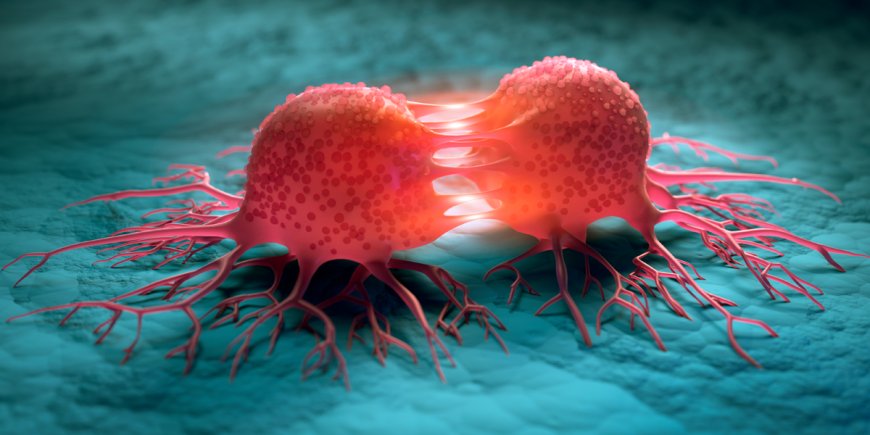Scientists Uncover a Cancer ‘Switch’—Could This Be the Key to Stopping Tumors?
Scientists have discovered a molecular ‘switch’ that controls cancer growth. Find out what this means for future treatments and why experts are excited

A Game-Changer in Cancer Research
Cancer has always been one of medicine’s biggest challenges—a complex disease that can mutate, spread, and resist treatments in ways scientists are still struggling to understand. But now, researchers may have cracked a major piece of the puzzle.
Scientists have just discovered a molecular ‘switch’ that could be responsible for turning cancer growth on and off. This breakthrough could revolutionize cancer treatment, opening the door to therapies that don’t just slow down tumors but stop them in their tracks.
So, what exactly is this ‘switch,’ and how close are we to real-world treatments? Let’s break it all down.
The ‘Switch’ That Controls Cancer Growth
A team of researchers recently identified a specific protein mechanism that acts as a kind of on/off switch for cancer cells. Essentially, this mechanism determines whether cancer cells continue to grow uncontrollably or get shut down.
???? What they found: Certain proteins in the body act as molecular regulators, either fueling tumor growth or suppressing it.
???? Why it’s important: If scientists can control this switch, they could halt cancer progression without harming healthy cells.
???? Potential impact: This discovery could lead to highly targeted treatments that don’t rely on traditional chemotherapy, which often damages healthy tissues.
This is a huge deal because most cancer treatments focus on killing cells broadly, which leads to harsh side effects. But with this new approach, the focus shifts to disabling cancer at its core.
How Does This Change Cancer Treatment?
Traditional cancer treatments—like chemotherapy and radiation—work by attacking fast-growing cells. The problem? They can’t distinguish between cancer cells and healthy cells, leading to side effects like hair loss, fatigue, and immune suppression.
This newly discovered switch could change that entirely. Instead of destroying cancer cells, scientists could develop drugs that flip this switch off, stopping cancer without harming the rest of the body.
Here’s what this could mean for future treatments:
✅ More targeted therapies – Less damage to healthy cells, meaning fewer side effects.
✅ New drug possibilities – Treatments that work even when cancer resists traditional methods.
✅ Better survival rates – Earlier and more precise interventions could mean higher success rates.
It’s essentially a smart approach to cancer therapy—instead of using a sledgehammer, researchers are developing a finely tuned switch.
Where Are We Now?
While this discovery is groundbreaking, we’re still in the early stages. Here’s what’s next:
???? Lab Testing & Trials – Scientists are testing how this switch works in different cancer types.
???? Developing Targeted Drugs – Pharmaceutical companies are working to create molecules that can safely trigger or block this switch.
???? Clinical Trials in Humans – If early tests succeed, we could see human trials within the next few years.
Experts are hopeful that this discovery will lead to real-world treatments much sooner than previous breakthroughs.
What This Means for Cancer Patients
If you or someone you know has been affected by cancer, this research brings a new level of hope. While it won’t cure cancer overnight, it opens the door to treatments that are more effective and less punishing on the body.
For now, the best thing we can do is stay informed, support cancer research, and push for funding to bring these breakthroughs from the lab to real patients.
Final Thoughts: A New Era in Cancer Treatment?
The discovery of this cancer ‘switch’ is a major step toward a future where cancer isn’t just treated—it’s controlled and potentially prevented. If scientists can harness this mechanism, we could see a whole new class of therapies that stop cancer before it even starts.
The big question now is: How fast can we turn this discovery into life-saving treatments? Researchers are working against the clock, and if successful, this could mark the beginning of a new era in cancer medicine.
For now, we’ll be keeping a close eye on what happens next. Stay tuned—because this is one medical breakthrough that could truly change lives.
What's Your Reaction?
 Like
0
Like
0
 Dislike
0
Dislike
0
 Love
0
Love
0
 Funny
0
Funny
0
 Angry
0
Angry
0
 Sad
0
Sad
0
 Wow
0
Wow
0



















































